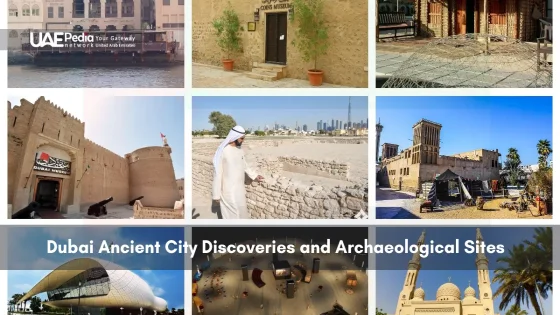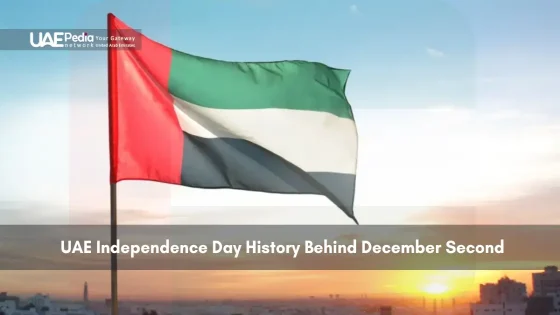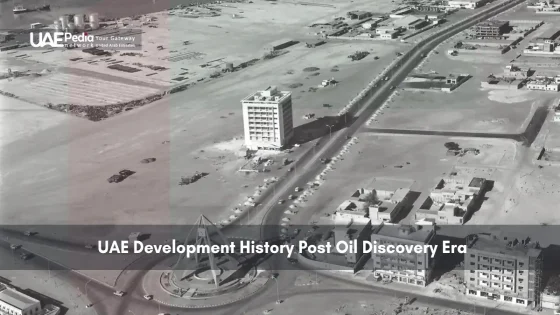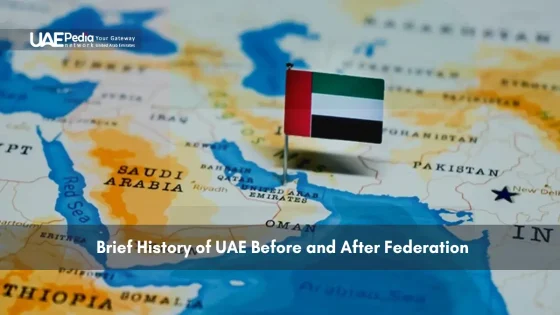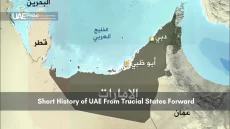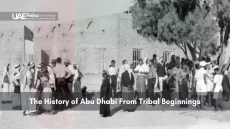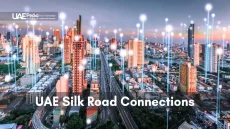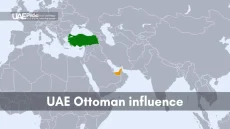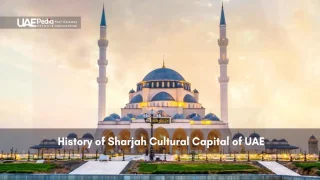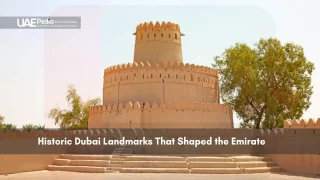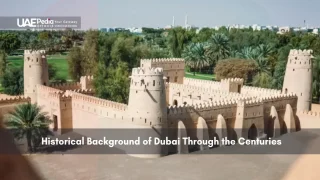Few realize that beneath Dubai’s glittering skyline lies a history stretching back over 4,000 years. How did a quiet fishing village evolve into a global hub while preserving its heritage? The answer whispers through narrow alleys and weathered structures in Bur Dubai, where time seems to slow.
At the heart of this story is the Dubai Creek—a lifeline that fueled trade and connected cultures long before skyscrapers dotted the horizon. Traditional wind towers, designed to catch desert breezes, still stand as silent witnesses to ingenuity that dates back centuries. These landmarks aren’t relics; they’re threads in a living tapestry blending past and present.
For visitors, exploring Bur Dubai feels like stepping into a hidden chapter. Markets hum with spices and stories, while restored neighborhoods reveal how communities thrived amid harsh climates. Modernity hasn’t erased these roots—it’s built alongside them, creating a dynamic contrast you can touch, taste, and hear.
Here’s what you’ll uncover:
- The role of the Dubai Creek in shaping trade routes and cultural exchange
- Architectural marvels like wind towers that kept homes cool long before AC
- Why Bur Dubai remains a vibrant gateway to understanding the emirate’s soul
Exploring the Historical Roots of Dubai
Imagine trading pearls for spices in a bustling market where dhows once lined the shore—this was daily life here centuries ago. Before steel towers, the economy thrived on oyster beds and fishing nets, with communities gathering around fires to share stories of the sea.
From Fishing Village Beginnings to a Trading Hub
Early settlers mastered survival in harsh conditions. They built homes from palm fronds and traded dried fish for tools. By the 18th century, pearl diving transformed the region into a global player, with merchants from India and East Africa flocking to its shores.
Today, the Al Fahidi Historical Neighborhood feels like an open-air museum. Narrow lanes reveal coral-stone houses, while the Bayt Al Khanyar Museum displays pearl merchants’ tools. Don’t miss the chance to sip Arabic coffee at a heritage café—the same blend traders drank while negotiating deals.
The Legacy of Pearl Diving and Early Commerce
Pearl divers once risked everything for treasures hidden beneath waves. Their legacy lives on through:
- Guided tours showcasing diving techniques and traditional songs
- Spice souks where saffron and cardamom still perfume the air
- Maritime trade history exhibits detailing routes that connected continents
This place didn’t just adapt to the modern world—it shaped it. From pearl auctions to skyscraper deals, the spirit of enterprise remains woven into every transaction. Ready to walk where sailors and merchants changed the course of regional culture? Your journey starts here.
Navigating Old Town and Bur Dubai
Lost in a maze of sun-dappled alleys? That’s Old Town for you—a place where every turn whispers stories of merchants, sailors, and families who shaped this neighborhood. Here, the past isn’t locked behind glass; it pulses through coral-stone walls and shaded courtyards waiting to share their secrets.
Winding Alleys and Traditional Architecture
Picture this: narrow pathways twist like ribbons, their shadows cooled by heritage wind towers that still catch desert breezes. These alleys aren’t just shortcuts—they’re time capsules. Courtyard homes with carved wooden doors reveal how families thrived in communal spaces, while restored buildings showcase craftsmanship that defies time.
Iconic Markets and Cultural Landmarks
Follow the scent of cardamom to the Spice Souk—a riot of crimson saffron threads and golden turmeric piles. Vendors here offer a variety of items, from rosewater-soaked dates to handwoven textiles. Want the full experience? Hop on a wooden boat (abra) crossing Dubai Creek—the same route traders used centuries ago.
Pro tip: Let yourself wander. You’ll stumble upon hidden art galleries, sip karak chai at street stalls, and hear tales of spices that fueled empires. For budget-friendly adventures, these neighborhoods deliver—no entrance fees, just pure discovery.
Planning Your Visit to the dubai ancient city
Time travel isn’t science fiction here—it’s your morning itinerary. To connect with layers of history, start early when golden light bathes coral-stone walls and markets hum with fresh-bread aromas. Locals recommend viewing sites clockwise around the Creek: begin at Al Fahidi’s wind towers, wander through spice-scented lanes, then cap the day with sunset aboard a traditional abra.
Essential Tips for an Authentic Experience
Pack light layers—shade and sun alternate like chapters in these neighbourhoods. Wear shoes that grip uneven cobblestones, and carry cash for street vendors. Pro tip: Ask guides about century-old cooling systems still used in some homes. You’ll notice how the past whispers through today’s rhythms, like merchants bartering dates using hand gestures their ancestors perfected.
Curated Tours and Must-See Sites
Book sunrise walking tours to avoid crowds. Operators like Heritage Paths reveal hidden courtyards where people once gathered for storytelling nights. Their “Creek Chronicles” route compares pearl divers’ past struggles with today’s revitalized markets—you’ll taste saffron ice cream where sailors traded spices.
Don’t miss:
- Bayt Al Khanyar Museum’s pearl-diving tools (open 9 AM–1 PM daily)
- Silent Fridays: Explore quieter alleys when locals visit family
- Evening sound-and-light shows at restored century-old forts
As one guide puts it: “Every lane here feels like coming home—even if your home is 7,000 miles away.” Safe routes marked with blue tiles guide you through neighbourhoods that’ve welcomed travelers for generations. Ready to walk where people turned tides of history? Your adventure begins with a single step—preferably before 10 AM.
Savoring Culture: Souks, Museums, and Heritage Spots
Your senses will lead the way here—cinnamon wafts through shaded alleys, sunlight glints off golden pendants, and laughter spills from courtyards where stories have brewed for generations. This is where architecture hums with life, and every corner feels like a handshake between past and present.
Exploring Spice and Gold Souks
Step into the Spice Souk, where turmeric mounds glow like miniature suns and vendors offer saffron threads with a wink. Nearby, the Gold Souk dazzles with necklaces that seem spun from desert starlight. Haggle playfully—prices here dance between tradition and modern flair.
Immersive Visits to Historical Museums and Art Galleries
Local museums hide treasures in plain sight. Wind towers—those ingenious air-cooling marvels—frame exhibits on pearl divers’ tools. In Alserkal Avenue’s galleries, contemporary works hang beside artifacts, proving creativity thrives in this neighbourhood.
Traditional Coffee Houses and Local Cuisine
Slip into a majlis-style café where cardamom-laced coffee steams in handleless cups. Share platters of luqaimat (sweet dumplings) as regulars debate the day’s news. One patron laughs: “We don’t just drink here—we refuel the heart of the community.”
Pro tip: Pair your unique adventure experiences with a stroll through textile markets. Silk scarves flutter like captured rainbows, and leather sandals line stalls where craftsmanship outshines mass production. Every purchase here supports artisans keeping traditions alive.
Transportation and Practical Insights for Tourists
Crossing Dubai Creek feels like flipping through pages of history—one shore whispers tales of pearl divers, while the other hums with metro trains. Getting around these neighborhoods blends time-worn traditions with sleek efficiency. Here’s how to move like a local while soaking up stories etched into every corner.
Navigating Dubai Creek and Abra Rides
Hop aboard a wooden abra—these iconic boats cost just 1 AED per ride and glide past dhows loaded with cargo. Morning crossings bustle with workers, while sunset trips offer golden-hour views of wind towers. Pro tip: Sit near the bow to catch breezes that carry scents of cardamom from the Spice Souk.
Public Transit and Local Tips for Getting Around
The Green Line metro connects dubai old districts to glittering malls in 15 minutes. Use RTA cards for buses, trams, and water taxis—they’re rechargeable at any station. Avoid rush hours (8-9 AM, 5-7 PM) when routes near heritage sites get packed.
Grab food from creek-side stalls: samosas cost less than bottled water here. One vendor winks: “Our recipes are older than these boats—eat slow, taste the history.” For deeper dives into dubai history, join free walking tours departing from Al Fahidi Station.
Key connections:
- Bus 53 links Al Ghubaiba Station to the Gold Souk in 8 minutes
- Water taxis stop at Al Seef—a restored area blending old dubai charm with modern cafes
- Ride-sharing bikes available near major sites for quick hops between malls and museums
Final Reflections on a Journey Through Time
History doesn’t just live in museums here—it dances in the clink of gold coins and the rustle of spice sacks. From the pearl diving traditions that built empires to the art galleries reimagining tomorrow, every corner hums with stories waiting to pull you deeper.
Walking through the old town, you’ll trace paths once trod by merchants bartering under 19th century wind towers. The Gold Souk still glimmers with treasures, where sunlight catches necklaces like it did centuries ago. Modern creativity thrives too—museums display divers’ tools beside contemporary installations, proving legacy fuels innovation.
This city offers more than sights—it hands you a lens to see Dubai through generations. Sip cardamom coffee where traders once haggled, or lose yourself in alleyways where time bends. For those eager to see best what endures, discover more layers of this ever-evolving tapestry.
Take one last glance at the old town’s coral walls as sunset paints them gold. Whether you’re drawn to the Gold Souk’s sparkle or the quiet pride of pearl diving sagas, remember: every step here honors a past that still shapes tomorrow. Ready to write your own chapter?
Start with a walk through Al Fahidi’s labyrinthine alleys, then hop on an abra boat across Dubai Creek to Deira’s spice and gold souks. Mixing foot exploration with breezy water rides lets you absorb the area’s layered heritage while staying cool!
Absolutely! Kids love the interactive exhibits at Dubai Museum in Al Fahidi Fort, chasing shadows through wind-tower architecture, and munching on dates at heritage houses. Abra rides and cultural workshops at Sheikh Mohammed Centre also spark young imaginations.
Plan at least half a day. Wander the textile souk, sip karak chai at local cafés, and dive into the Dubai Museum’s pearl-diving displays. Add time if you’re hunting for Persian carpets or spices—bargaining is part of the fun!
It’s a sensory explosion! Unlike air-conditioned malls, here you’ll smell cardamom stacks, touch saffron threads, and hear traders banter in Arabic. Prices are negotiable, and tiny stalls hide rare finds like Omani frankincense or Iranian dried limes.
Yes! Al Bastakiya’s wind towers and coral-stone buildings showcase pre-oil ingenuity. For a deeper dive, visit the Heritage Village near Creek Park or the restored houses in Al Shindagha—their courtyards and barasti roofs whisper 19th-century stories.
If you crave context, yes. Local guides decode hidden details—like why souk alleyways twist or how pearl divers survived months at sea. DIY explorers can grab audio guides at museums or follow themed trails via the Dubai Culture app.
Light, breathable fabrics work best—think linen shirts or maxi dresses. Shoulders and knees should be covered in mosques or heritage zones. Comfortable shoes are a must for cobblestone streets!
